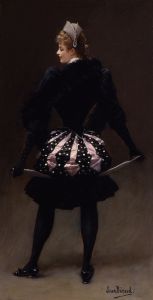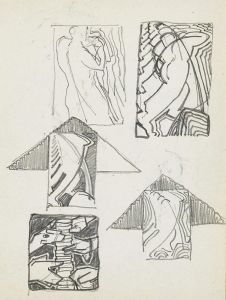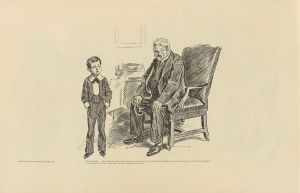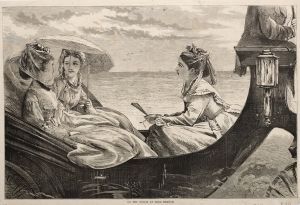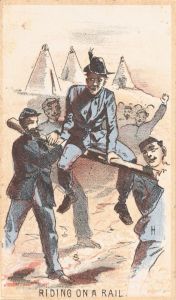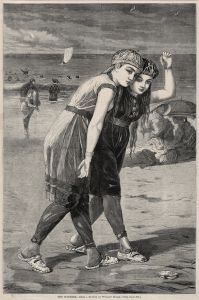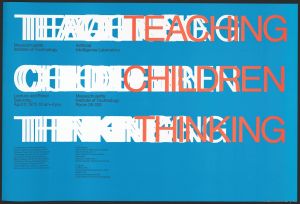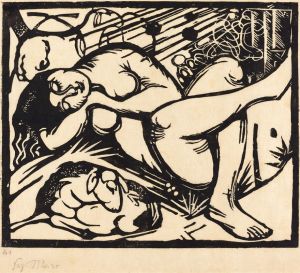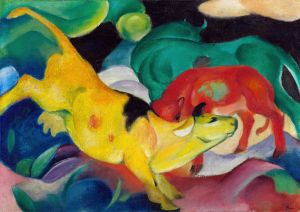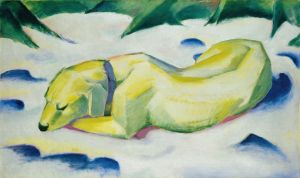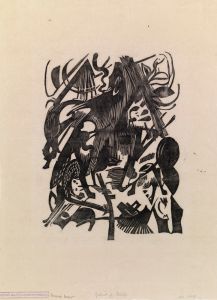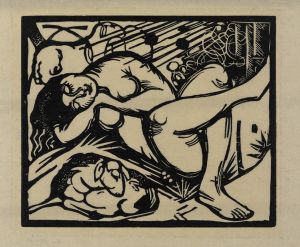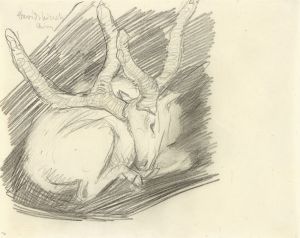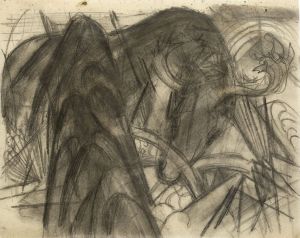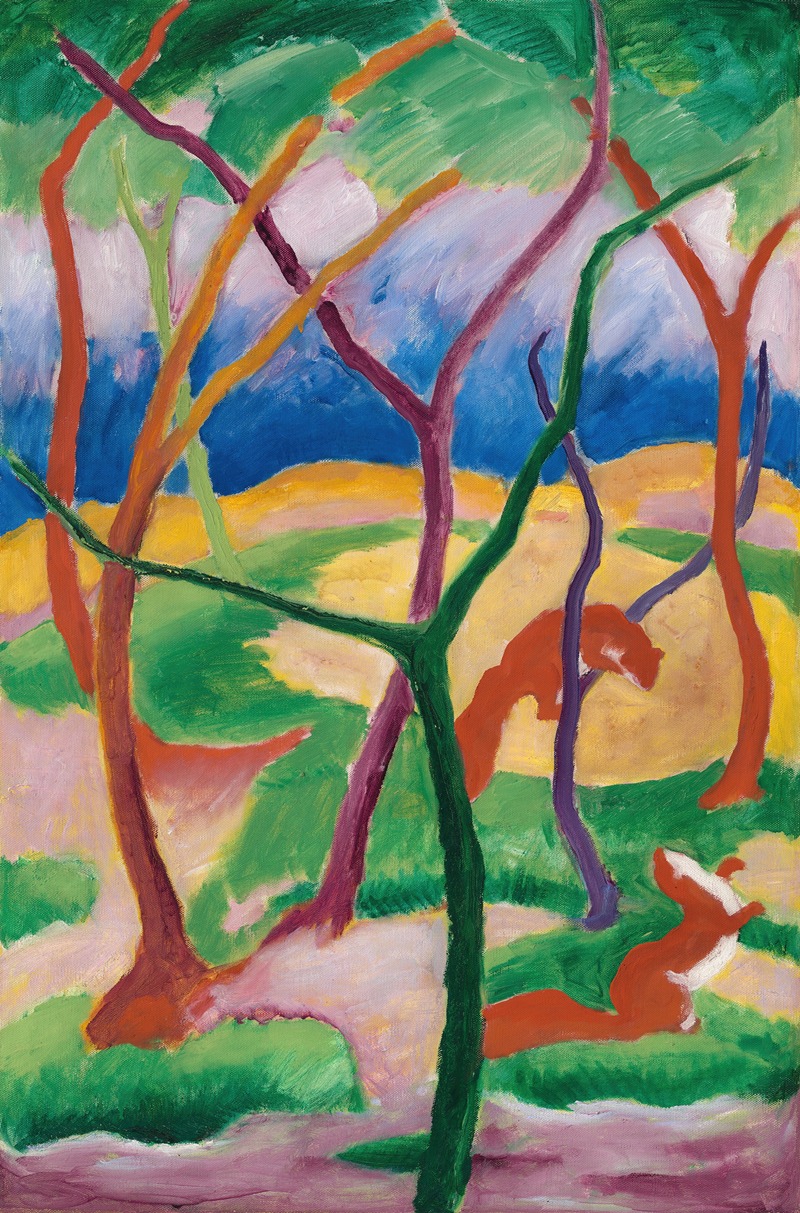
Weasels at Play
A hand-painted replica of Franz Marc’s masterpiece Weasels at Play, meticulously crafted by professional artists to capture the true essence of the original. Each piece is created with museum-quality canvas and rare mineral pigments, carefully painted by experienced artists with delicate brushstrokes and rich, layered colors to perfectly recreate the texture of the original artwork. Unlike machine-printed reproductions, this hand-painted version brings the painting to life, infused with the artist’s emotions and skill in every stroke. Whether for personal collection or home decoration, it instantly elevates the artistic atmosphere of any space.
Franz Marc, a prominent figure in the German Expressionist movement, is renowned for his vivid and emotive depictions of animals. One of his lesser-known works, "Weasels at Play," exemplifies his unique approach to capturing the essence of animal life through bold colors and dynamic compositions. Although there is limited information specifically about "Weasels at Play," understanding Marc's broader artistic context provides insight into this piece.
Franz Marc was born on February 8, 1880, in Munich, Germany. He initially studied theology but later shifted his focus to art, enrolling at the Academy of Fine Arts in Munich in 1900. Marc's early works were influenced by Impressionism, but his style evolved significantly after encountering the works of Vincent van Gogh and the Fauves. These influences, combined with his interest in spirituality and the natural world, led him to develop a distinctive style characterized by vibrant colors and abstract forms.
Marc co-founded the art movement known as Der Blaue Reiter (The Blue Rider) in 1911, alongside fellow artist Wassily Kandinsky. This group sought to transcend the materialism of the modern world through art, emphasizing spiritual and emotional expression. Animals became a central theme in Marc's work, as he believed they represented an uncorrupted state of being, in contrast to the complexities and moral ambiguities of human society.
In his paintings, Marc often used color symbolically to convey emotional and spiritual states. He associated blue with masculinity and spirituality, yellow with femininity and joy, and red with violence and conflict. These color associations are evident in many of his works, where animals are depicted in unnatural yet emotionally resonant hues.
While specific details about "Weasels at Play" are scarce, it is likely that Marc applied his characteristic use of color and form to this piece, capturing the playful and dynamic nature of the weasels. His ability to convey movement and emotion through simplified shapes and bold colors would have been central to the composition, reflecting his belief in the spiritual purity of animals.
Marc's career was tragically cut short by World War I. He was drafted into the German army in 1914 and continued to paint during his service. However, his life ended abruptly when he was killed in action on March 4, 1916, at the age of 36. Despite his brief career, Marc left a lasting impact on the art world, influencing subsequent generations of artists with his innovative approach to color and form.
Today, Franz Marc is celebrated as one of the leading figures of German Expressionism, and his works are held in high esteem by art historians and collectors alike. Although "Weasels at Play" may not be as widely recognized as some of his other paintings, it remains a testament to his skill in capturing the essence of animal life and his enduring legacy in the world of art.





